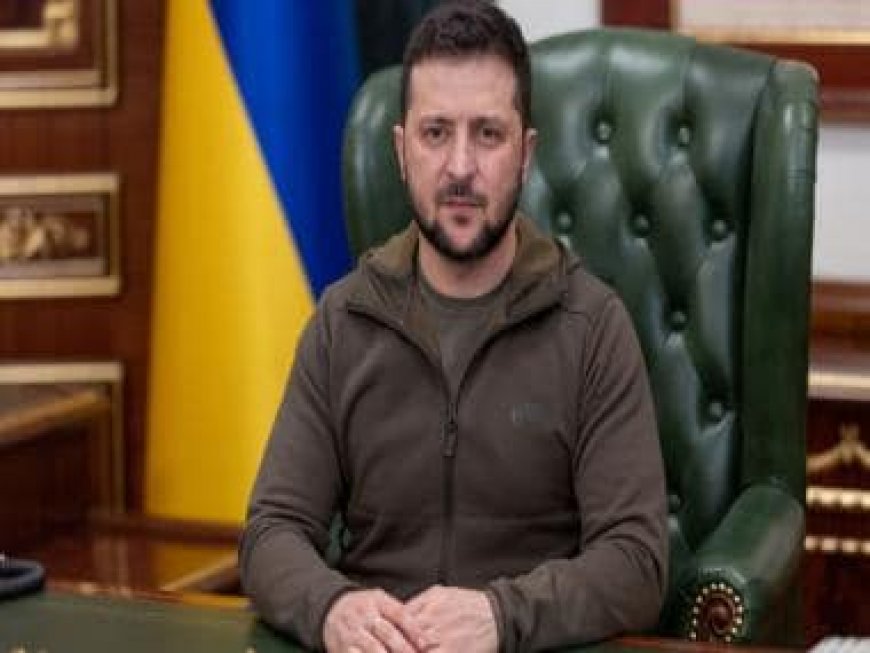Ukraine creating searchable database of art pieces owned by super-rich Russians, so they can't be sold
Ukraine creating searchable database of art pieces owned by super-rich Russians, so they can't be sold

Artworks of immense value, rivaling those found in the world’s most prestigious galleries, have taken centre stage, not on the walls of a grand exhibition, but within a groundbreaking searchable database that Ukraine has been creating in an effort to stop super-rich Russians from selling them.
This collection, exceeding 300 pieces and growing, was formerly held by Russian individuals facing Western sanctions, now meticulously catalogued by Ukraine’s National Agency on Corruption Prevention (NACP) under the umbrella of its “war and sanctions portal.”
Sculptures and paintings, once part of the opulent troves amassed by Russia’s affluent elite, are listed in this digital repository.
These possessions have drawn attention due to their association with individuals accused by both the Western countries and Kyiv of enabling and supporting Vladimir Putin’s war on Ukraine.
The intention behind this innovative tool is clear: NACP aims to streamline the process of sanctions verification for virtuous participants in the art market.
Concurrently, this measure presents a formidable obstacle to Russian oligarchs seeking to covertly sell their prized artistic assets.
Stringent economic sanctions imposed by the West target numerous Russian magnates, endeavoring to limit their capacity to shuffle their wealth across international borders.
Nevertheless, artworks offer a unique challenge. Their transference across nations often evades scrutiny, facilitated by the malleable valuation inherent in the art market.
Citing a report from the Financial Action Task Force, which oversees anti-money laundering initiatives, the global trade of antiquities, art, and cultural artifacts was estimated at an astonishing $65.1 billion in 2021.
Despite the sanctions, the NACP asserts that Russian oligarchs have maintained the ability to exploit art objects as conduits for illicit financial activities.
“The ‘war and art’ division will actively contribute to the broader effort of curtailing sanctions evasion,” the agency affirmed.
By identifying the artistic holdings of sanctioned Russians, NACP aims to pave the way for asset freezing, confiscation, and eventual transfer to Ukraine.
Prominent figures, including former Chelsea football club owner Roman Abramovich, feature on the portal’s roll of collectors.
Abramovich’s assortment comprises notable artworks, encompassing a 1976 triptych by Francis Bacon, Alberto Giacometti’s Woman of Venice I, and albums from Ilya Kabakov’s The 10 Characters series. The aggregated value of these acquisitions is estimated at £128 million ($163.9 million).
The database also divulges that Leonardo’s iconic Salvator Mundi, dating back to around 1500, was once held by billionaire Dmitry Rybolovlev before changing hands.
Another entry implicates Mikhail Fridman, a close ally of Putin and co-founder of Alfa Group, in the acquisition of Warhol’s homage to Marilyn Monroe in 2013.
The database’s inclusion of renowned works by artists like Claude Monet, Damien Hirst, and Auguste Rodin underscores the considerable wealth amassed by those associated with the Russian leadership.
The portal encompasses details of over 300 art objects, owned by figures such as Russian billionaire Viatcheslav Kantor, model Daria Zhukova, and rapper Timur Yunusov (Timati), all under sanctions for their direct support of Russia’s actions in Ukraine.
The amassed worth of these identified artworks totals an astonishing $1.3 billion. Some works have been transferred to individuals not under sanctions, yet their prior ownership by Russians remains documented as a preventive measure against the misuse of these assets for money laundering purposes.
What's Your Reaction?

























































